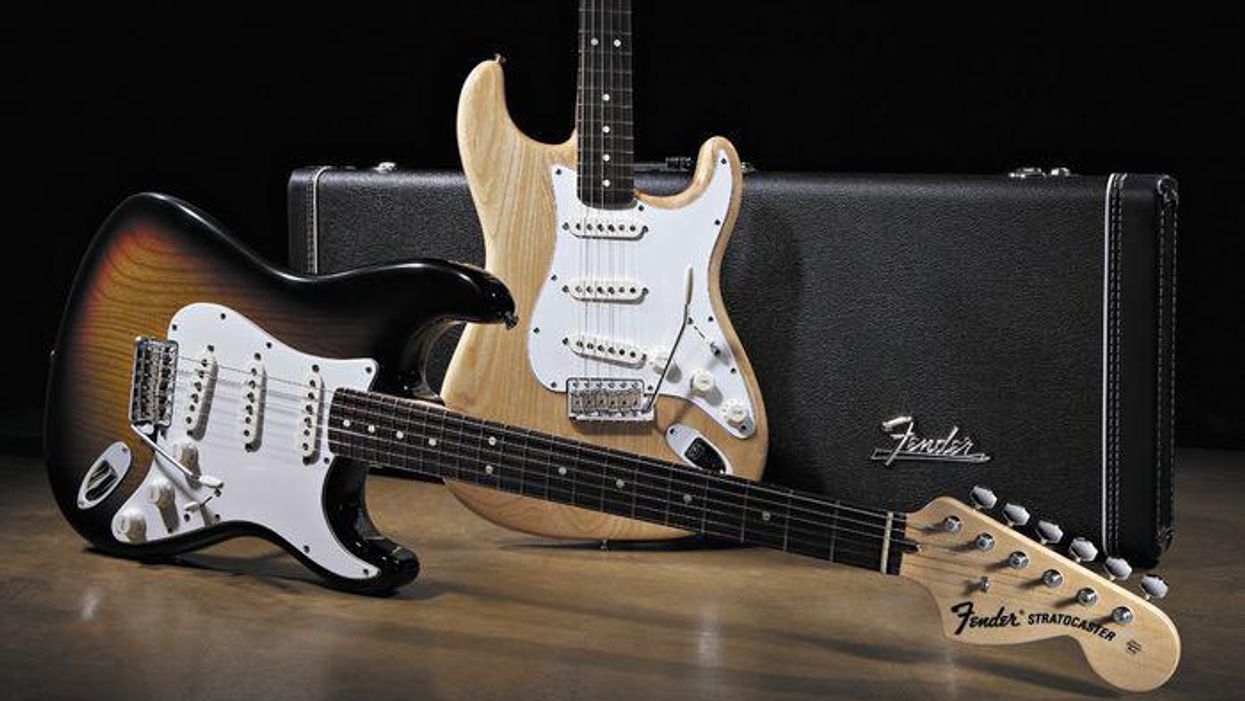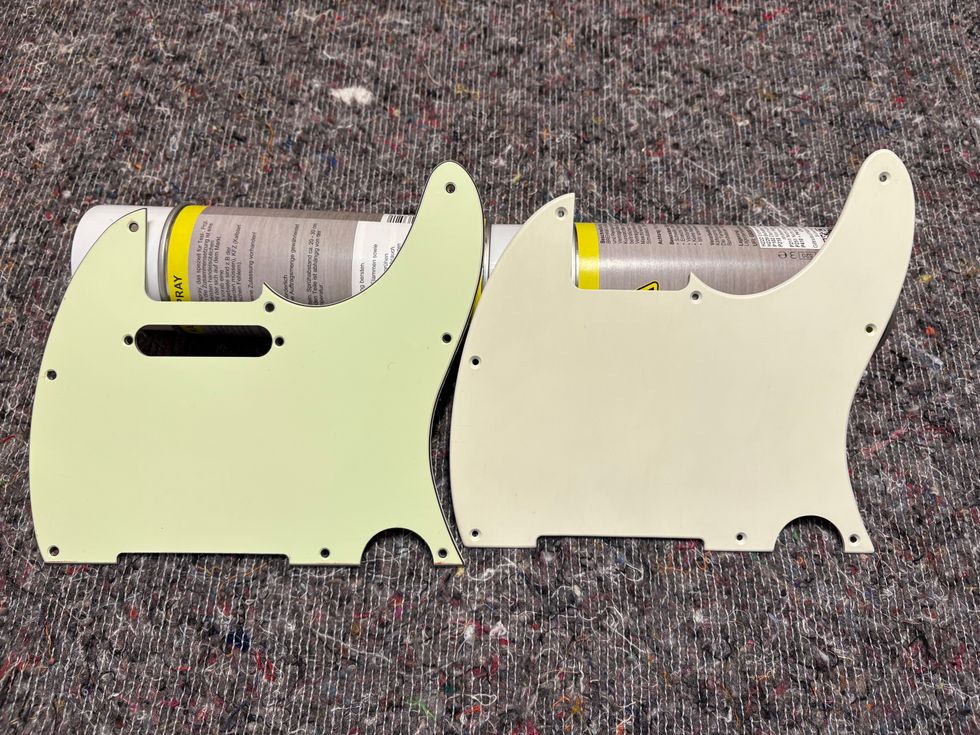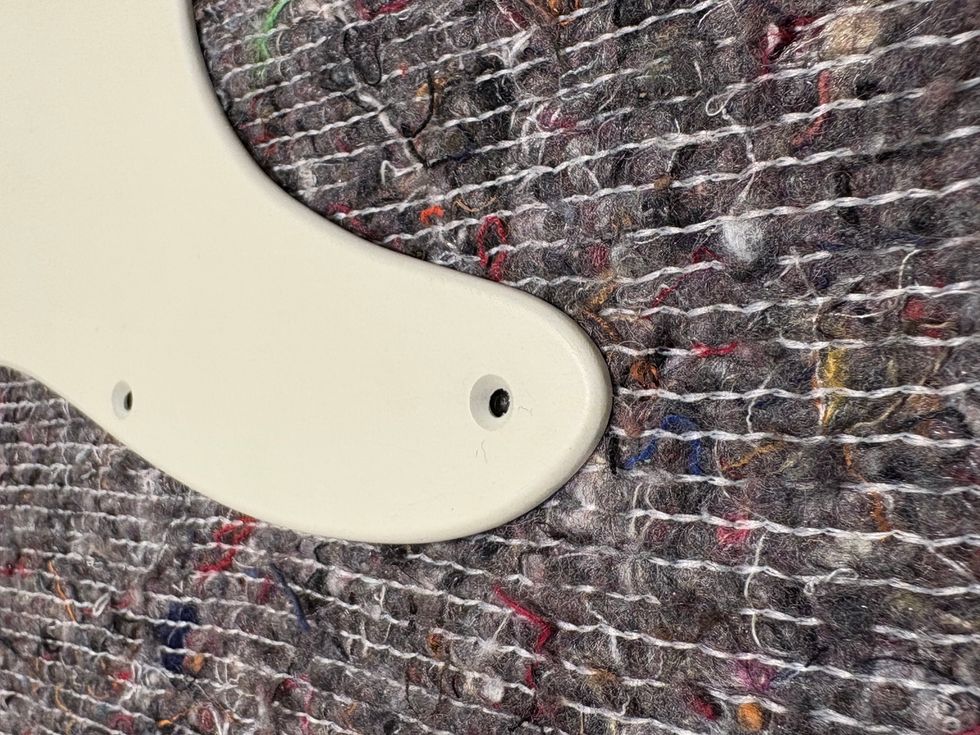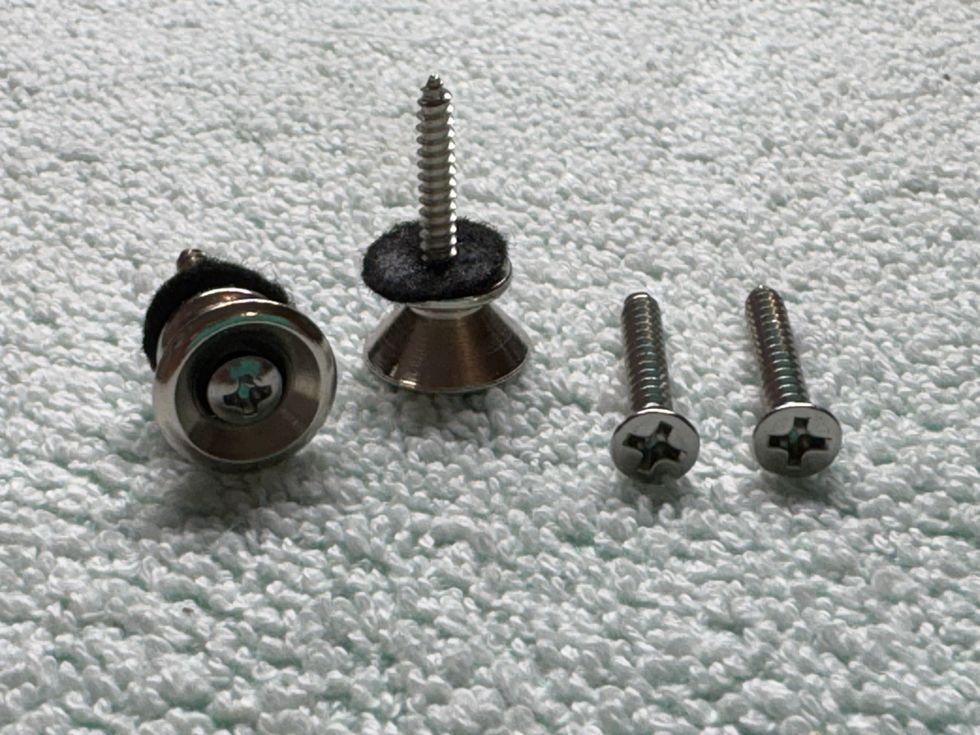This month we will start with a new series about the most demanded modifications on electric guitars. We receive a lot of emails about this subject, so we made a list of the most demanded mods. I decided to divide this series into three chapters: Stratocaster, Telecaster and Les Paul type guitars. You can transfer most of this mods to any similar guitar -- eg. the typical Les Paul configuration (two humbuckers with two volume and two tone controls) is the same as in a typical SG, 335, etc.
We will start with the Stratocaster, which is a perfect guitar for a lot of mods and hot-rodding things. Before we heat up the soldering iron, it''s time to think about some physical things and how to enhance the primary tone of your Stratocaster. This is an often underrated and overlooked subject on electric guitars, because a lot of guys think that it''s only the pickups that make any difference. But a pickup by itself is really limited, and will only pick up the vibrations from the guitar, transporting it to the first stompbox or the amplifier. Our acoustic colleagues know what I´m talking about, because primary tone is what its all about for them.
So it''s time to face, that the classification "good" or "bad" on electric guitars normally means "good" or "bad" primary tone abilities. In simple terms, the primary tone of any electric guitar is what you hear when you play it unplugged. Besides this, you can also feel the primary tone, because the whole guitar vibrates and resonates. Depending on the spot of the guitar you are touching, you will feel different vibrations. Give it a try and touch the neck, body, bridge and headstock while someone else is playing your guitar. There are a lot of simple things you can do to enhance your guitar''s primary tone; in some cases this can make a good sounding guitar out of an average sounding guitar, and in other cases it will make a good sounding guitar even better.
1. Take care of all the screws on your guitar.
They should be fastened very tight for a better sound, but don''t break them! Critical locations are the screws for the neck, the bridge and the tuners. Check them regularly. Loose screws can also be the reason for penetrating, rattling noises on electric guitars.
2. A Stratocaster typically has a rear-routed tremolo cavity that is covered with a plastic cover and some screws.
Take the cover away. It''s amazing how the overall sound of a guitar can change by simply taking away this cover. I know it sounds like voodoo, but it''s true -- give it a try and hear the difference yourself.
3. If you don''t use the tremolo, get it blocked professionally with a piece of wood.
This will increase sustain and response dramatically.
4. Take care of your neck cavity.
Uninstall the neck and check the cavity; it should be absolutely free of any paint, dirt and other things. Over the years I''ve found a lot of funny things there -- credit cards, paper, cardboard, etc.
Also, The bottom and sides of the neck cavity should be absolutely plain and free of any paint. If they''re not, take a piece of sandpaper and rework your cavity until you see the plain wood. If you feel that the neck does not fit the cavity because the cavity is too wide or too low, get your guitar to an experienced luthier who will "shim" it. Bad work at this critical point can ruin your guitar''s tone!
5. Check the corresponding part of the neck (the so-called "neck heel") that is attached to the neck cavity.
Often you can find stickers there -- scrape them away. I also highly recommend sanding away all the paint until you can see and feel the plain wood. You don´t need any paint there, and a strong and even "wood to wood" connection will enhance the tone transfer dramatically. Bolt on the neck screws very tight, but don''t overdo it.
6. Let your guitar breath.
For this, you should take away the paint at any location that can´t be seen. One critical location is the surface underneath the bridge of a Strat. Eric Johnson knows what he''s doing when he does this to all of his guitars. You can also completely remove the paint of the inside of the pickup cavities and the entire surface underneath the pickguard.
7. Fender has an interesting little detail on the Eric Johnson Strat.
They sand away the paint on top of the inertia bar (a.k.a "tremolo block") that is attached to the bottom of the tremolo bottom plate for a better tone transfer. At first I thought that it was voodoo and marketing, but later I had to take out the inertia bar on one of my own Strats, and since it was out anyway, I gave it a try and the result was stunning. The tone is stronger -- it was like "freeing" my guitar. So give it a try and listen to see if it makes a difference on your guitars.
8. Different materials can really make a difference.
I'm sure you all know the discussion about the Les Paul aluminum stop tailpiece, right? So here are different materials I''ve tried that made a big difference to the tone:
- Nut Material: This is a wide field to experiment in, which I''ve discussed at length in a previous column, but for me nothing beats a good bone nut. Others prefer brass, wood, stainless steel, plastic, etc. You have to try it on your own what you like best, but changing the nut material really makes a big difference in tone
- Bridge Saddles: You should think about replacing the standard diecast saddles with the original sheet metal ones that were used during the fifties and sixties when you want a vintage tone. Brass or stainless steel saddles are also a good choice for a Strat.
- Tuners: Different tuners will make a difference in your tone; heavier tuners like most Grover products will give you more sustain and a stronger and louder primary tone. The old Kluson tuners will make your Strat more open and transparent sounding with a faster attack.
- Bridges: If you have a cheap diescast bridge, you should think about replacing it with a metal one.
- Tremolo Bar: The material of the inertia bar is crucial for a Stratocaster''s tone. Even here diecast is the standard today; historically correct and awesome sounding is steel. This mod is highly recommendable for all Strats!
In general you can say that particularly diecast tends to dampen your guitar''s primary tone and should be replaced with more vibrant and resonant materials for a better and faster tone transfer.
9. Increasing the mass of your guitar will have a noticeable influence on the tone and can help to get rid of certain dead spots on the fretboard.
A classic trick is to clamp or screw some metal to the headstock of the guitar. I recommend checking out the "Fat Finger" clamp from Groove Tubes. The difference is subtle but audible and I can only recommend trying it. For a quick test, you can also use a metal capo from your acoustic guitar; the Kyser "quick change" model works great for this.
10. It makes a big difference to the tone of a Strat if you use string trees or not, and where you place them.
Using string trees changes the pressure that comes from the strings to the nut, and the higher the pressure, the stronger the tone. I use "butterfly" metal string trees for the D,G,B and high E string and I place them not too close to the nut, because I do a lot of "behind the nut" bendings.
To close, here are some more tips about your guitar''s electronics and peripheral things:
- Check the wiring of your guitar, you will often find a lot of crappy cables in there. Get a high-quality cable and rewire the complete electronics. It´s nearly unbelievable what this can do to your tone.
- Check the pots, pickup selector switch and output jack. If you find some poor quality, made-in-the-far-east parts, get them replaced with quality parts.
- Restring your guitar with pure-nickel strings and hear details you''ve never heard before from your guitar.
- Replace your cables with a very high quality cable (eg. George L''s) and hear some more details you''ve never heard before while playing.
- Try different plec materials and hear what you like best. From my experience I can say that the shell-colored celluloid plecs have the best Fender tone with a percussive attack and a lot of twang.
You see, some very small things can make a huge difference in the end. Most of the things we discussed here are easy to do and not very expensive, so I hope I could motivate you to try them and see if you like them. They can result in your own signature tone you always wanted. Next month we will talk about a very common and cool mod for your Strat, the so-called "7-Sound Mod."
Until next month, stay tuned !
[Updated 6/30/21]











































